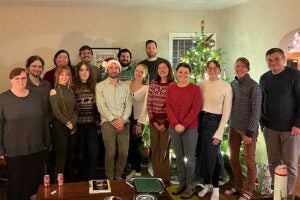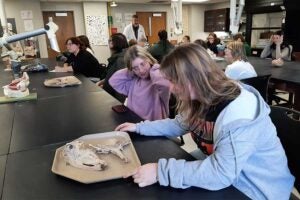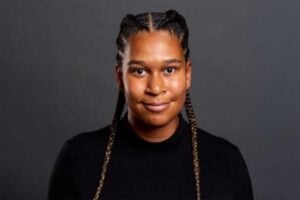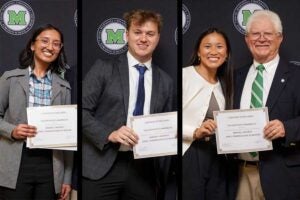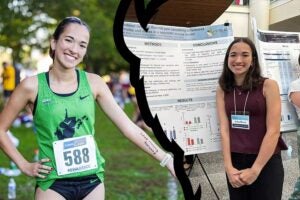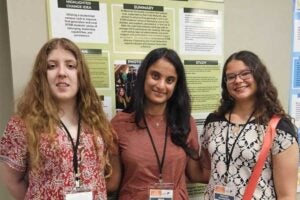Biological Sciences News Archive
The Plants Group, proved that learning doesn’t take a holiday. During their annual potluck and white elephant gift exchange, members of the Puppo, Palmquist, and Shakirov labs added a scientific twist to the celebration by cataloging every plant species that made its way onto the dinner table. By the end of the evening, the group
The College of Science is proud to recognize three outstanding students in Biological Sciences as recipients of the 2025–2026 Student Awards. David Boak, an MS student in the Palmquist Lab, has been awarded the Donald Cain Tarter Biological Sciences Student Research Scholarship. His research utilizes STEPWAT2, an individual-based plant simulation model, to examine climate change
The College of Science was thrilled to welcome students and teachers from Scott High School to campus this week! Their visit was packed with discovery and hands‑on experiences as they toured our cutting‑edge research labs, explored the museum, herbarium, greenhouse, and even stepped inside the advanced anatomy lab. Along the way, students had the chance
Biological Sciences alum Sidney Strause has earned global recognition for her research on heart health. Strause, now a biomedical research Ph.D. student at the Marshall University Joan C. Edwards School of Medicine, received the International Union of Pure and Applied Biophysics (IUPAB) Poster Prize at the 17th International Meeting on P-Type ATPases in Health &
The College of Science is proud to celebrate several outstanding students who excelled at the 37th Annual Marshall University Health Sciences Research Day, held Nov. 3 at the Marshall Health Network – St. Mary’s Center for Education Conference Center. Dr. John Karickhoff Medical Innovation Award for Best Overall Presentation Isha Gupta, a second-year medical student
Biology senior Asha Bora, fresh off of personal bests at last week’s Sun Belt Cross Country Conference Championship, will present her research at the Society for Neuroscience 2025 Annual Meeting in San Diego, Nov. 15–19. A native of Hurricane, West Virginia, Bora will share findings from her undergraduate research in Dr. Spitzer’s lab, where she
Congratulations to Kim Dingess on receiving a John Marshall Service Award recognizing her outstanding dedication and service to Marshall University. Through her leadership in developing summer study abroad programs in Costa Rica and Uganda, Dingess has created life-changing opportunities for students and demonstrated exceptional commitment to global learning. The College of Science celebrates Kim for
Three Marshall University students, Biology majors Erica Edinger and Neha Chandrasekar and Biochemistry major Nevaeh Ellington, are featured in the latest issue of Neuron magazine for their work with the First2 Network, an NSF-funded initiative to increase the number of college graduates in STEM disciplines. As student leaders of the First2 Network at Marshall, Edinger,
College of Science graduate student Mary Zarilla has documented the first recorded occurrence of the African golden cat (Profelis aurata) in the Toro-Semliki Wildlife Reserve—marking the first sighting of the species in northwestern Uganda. Zarilla captured a daytime image of the endangered cat using a camera trap she deployed in the park in July 2025.
The College of Science congratulates Dr. Holly Cyphert, associate professor in the Department of Biological Sciences, on receiving funding from the NASA West Virginia Space Grant Consortium to support the HERD STEM-pede at Marshall University. The HERD STEM-pede is a one-day, hands-on science camp designed to introduce fourth- and fifth-grade students to key concepts in
